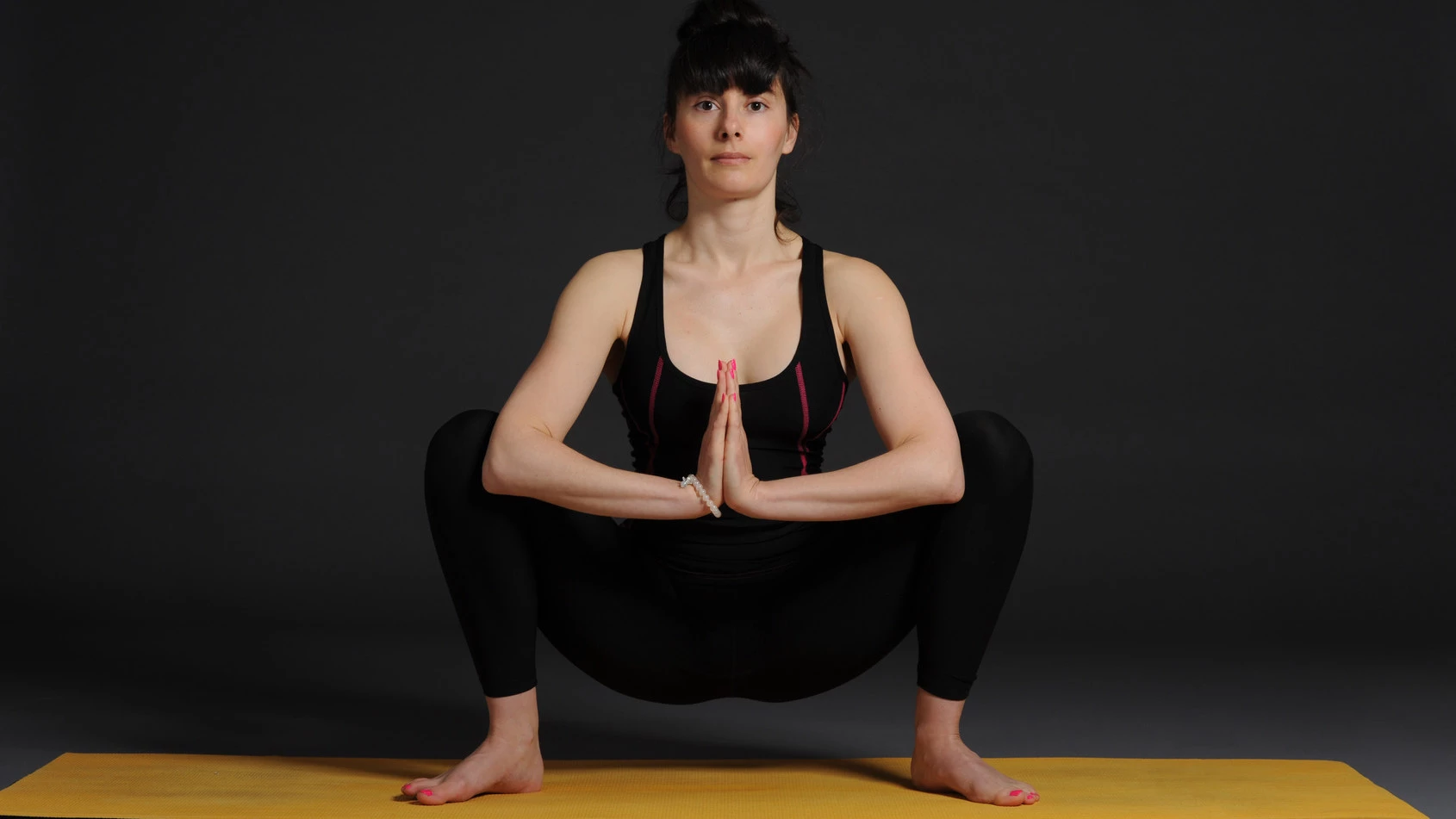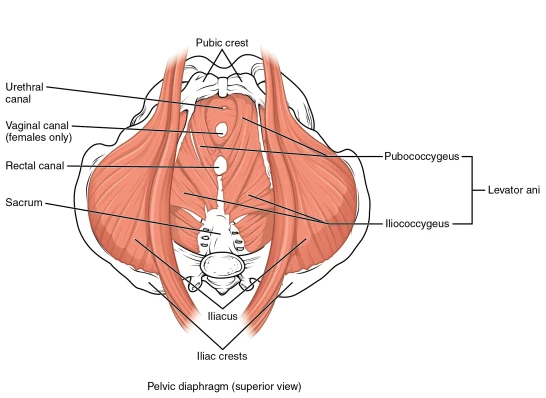Pelvic Floor Problems in the Adult Athlete: Help for Muscle-Related Pain

I love the changes I’ve seen in our culture over the past 10 or so years. Healthy foods? Regular exercise? Joining gyms, boxes, studios, programs? This has become the norm for many people, and that is so awesome! I love to see people being more active, taking responsibility for their health, and really striving to care for their bodies throughout their lifespans.
However, with this change and shift toward more activity, I have started seeing some pelvic problems become more common. And I don’t blame the exercise. I will stand firm in my belief that there is no such thing as a bad exercise, but all exercises require proper form and performance.
Sometimes when we consistently perform exercises that we may not be able to do correctly, problems can creep in. I don’t say this to scare anyone off from exercises, but I think it is important to remember that pain is never normal. Bladder leakage? Bowel problems? Sexual pain? Also never normal.
So, I’m going to address two of the major things I am treating regularly in higher level athletes: we are going to talk about pelvic floor muscle pain.
Pelvic Floor Muscle-Related Pain
This problem occurs when the muscles of the pelvic floor become tender, overactive or hyper vigilant (basically contracting with too much intensity to guard or protect the pelvis). Often when this happens, people will feel pain in the lower abdomen, groin, hip, buttock or low back, or they may feel actual vaginal or rectal pain. The pain may also be associated with changes in bladder function (like increased urinary frequency, urgency or leakage), bowel function (like constipation or difficulty emptying bowels) or sexual function (typically pain or discomfort during intercourse). However, sometimes people will experience pain without any of these other symptoms at all.

Image attributed to Open Stax College. CC https://commons.wikimedia.org/wiki/File:1115_Muscles_of_the_Pelvic_Floor.jpg
We don’t always know exactly why this happens. However, there are some common reasons why the pelvic floor muscles might begin responding this way. First, we have to remember that the pelvic floor is just one part of a team of muscles that work together to modulate pressure within the abdomen and pelvis. So, the diaphragm, transverse abdominis, multifidus and pelvic floor work together to control intra-abdominal pressure, and pre-activate to support the spine and pelvis during movement.
Dysfunction in any one of these muscles can lead to problems with others. For example, I often find tender, irritated muscles in women after childbirth, especially those who have a diastasis rectus (separation at midline between the two rectus abdominis muscles). This separation impacts the stability at the abdominal wall, generally leading to gripping of the internal and external oblique muscles, alterations in ability to breathe optimally, and thus gripping at the pelvic floor muscles. We see a similar pattern occur in men and women with hypermobility. We can also see dysfunction creep in as a motor adaptation when someone has a history of low back, hip, neck, knee or other musculoskeletal problems.
For athletes in particular (this includes those of you doing CrossFit, Barre, personal training, yoga, Pilates, and other regular exercise), I often find that when a person lacks dynamic stability, the pelvic floor will compensate to give that stability. If a person is then doing regular exercise and does not have the adequate control, form, or force modulation to perform, these compensations become more prevalent and can then lead to pain.
What Can You Do About Pelvic Floor Pain?
If you think your pelvic floor may be a contributor to pain, the first step is to seek evaluation. It can be helpful to initially seek a medical evaluation to rule out other potential pain contributors (ovarian cysts, inguinal hernias, etc.). Then, I strongly recommend seeking an evaluation by a skilled physical therapist with advanced training in pelvic health. If you are living in a state that allows self-referral to physical therapy, you can see a physical therapist without a physician referral. However, if in doubt, check with your local physical therapy office.
Treatment for pelvic floor related pain in athletes typically focuses initially on re-establishing the optimal function of the pelvic floor muscles within the team of muscles we spoke about earlier. This is done by teaching the patient how to relax the pelvic floor muscles, use the amazing diaphragm in the proper coordination with the pelvic floor and abdominals, and often includes manual therapy to help reduce muscle tenderness and/or improve connective tissue or neural mobility around the pelvis.
A skilled pelvic floor physical therapist will not only assess the pelvic floor muscles, but will examine you from a whole-body perspective—watching you perform various movements, looking at your hips/back/knees/ankles, and assessing the soft tissues that could be contributors to your symptoms. This allows us not only to identify which tissues are contributing to the pain you experience, but also to identify any abnormal movement patterns which could be leading to the compensation in the first place.
Once the pelvic floor muscles are no longer hypervigilant, tender or overactive, we focus on restoring healthy movement. This includes integrating the pelvic floor and its team within those movements—the right way! At this point, we typically progress the athlete to his or her specific movements—whether that is Olympic lifting, squats, or a yoga warrior series—teaching the athlete proper form all while integrating the right muscle firing patterns to adequately stabilize.
Do I Have to Stop Exercising While I’m Doing Physical Therapy?
This is always a tough one. I fully recognize that many adult athletes love their workout routines and benefit so much by them—physically, socially and emotionally. Sometimes particular exercises will aggravate symptoms or worsen the problems the person is experiencing. In those cases, I often will recommend holding off on those movements for a short time period. While holding off on some exercises, we often can still work together to find exercises and movements that are appropriate and totally acceptable. I know this period can be frustrating for patients, as it is difficult to take a break from something you love, but I promise, it’s short! Our ultimate goal is to get people back to the activities they love as quickly and safely as we can!
Study with YogaUOnline and Leslie Howard – Yoga for the Pelvic Floor: Keys to Lifelong Health.
Another great article from Julie Wiebe PT and YogaUOnline – The Fit Floor Part 1: Training the Pelvic Floor for Fitness.
Reprinted with permission from Jessicarealept.com

Jessica Reale, PT, DPT, WCS is a board-certified specialist in Women’s Health and treats pelvic floor disorders in men, women and children at One on One Therapy in Atlanta, GA. She received her doctorate in physical therapy (DPT) at Duke University School of Medicine and was the director of the largest pelvic floor rehabilitation program in South Carolina prior to relocating to Atlanta in 2015. Jessica is passionate about helping her patients achieve optimal health through individualized treatment plans integrating the most current research. She is actively involved in educating the community and other professionals, and has lectured at support groups, conferences and universities. Jessica writes regularly about all issues related to pelvic health at her blog, www.jessicarealept.com
